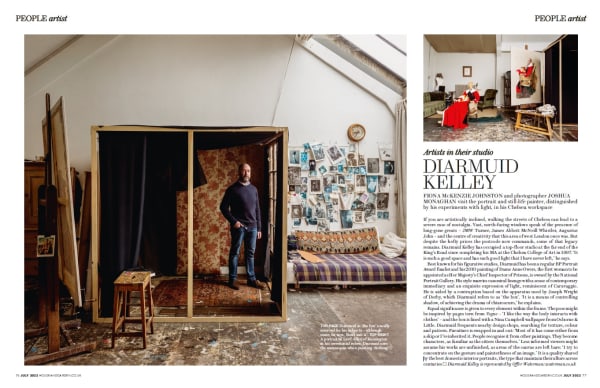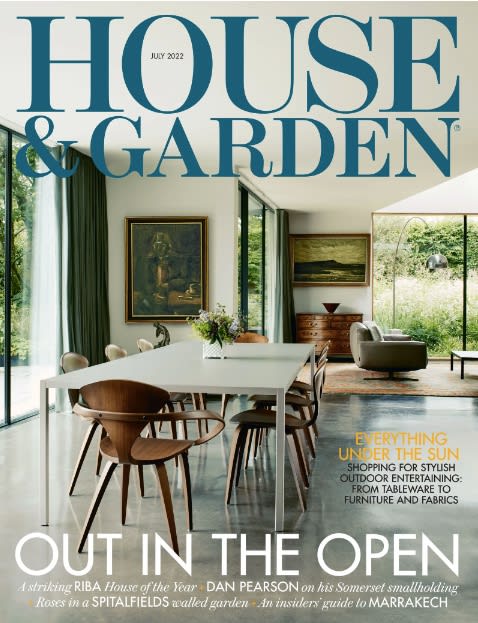Diarmuid Kelley was interviewed for the July issue of House and Garden magazine. Fiona McKenzie Johnston and photographer Joshua Monaghan visited the portrait and still-life painter, distinguished by his experiments with light, in his Chelsea workspace.
If you are artistically inclined, walking the streets of Chelsea can lead to a severe case of nostalgia. Vast, north-facing windows speak of the presence of long-gone greats – JMW Turner, James Abbott McNeill Whistler, Augustus John – and the centre of creativity that this area of west London once was. But despite the hefty prices the postcode now commands, some of that legacy remains. Diarmuid Kelley has occupied a top-floor studio at the far end of the King’s Road since completing his MA at the Chelsea College of Art in 1997. ‘It is such a good space and has such good light that I have never left,’ he says.
Best known for his figurative studies, Diarmuid has been a regular BP Portrait Award finalist and his 2010 painting of Dame Anne Owers, the first woman to be appointed as Her Majesty’s Chief Inspector of Prisons, is owned by the National Portrait Gallery. His style marries canonical lineage with a sense of contemporary immediacy and an exquisite expression of light, reminiscent of Caravaggio. He is aided by a contraption based on the apparatus used by Joseph Wright of Derby, which Diarmuid refers to as ‘the box’. ‘It is a means of controlling shadow, of achieving the drama of chiaroscuro,’ he explains.
Equal significance is given to every element within the frame. The pose might be inspired by pages torn from Vogue – ‘I like the way the body interacts with clothes’ – and the box is lined with a Nina Campbell wallpaper from Osborne & Little. Diarmuid frequents nearby design shops, searching for texture, colour and pattern. Furniture is swapped in and out: ‘Most of it has come either from a skip or I’ve inherited it. People recognise it from other paintings. They become characters, as familiar as the sitters themselves.’ Less informed viewers might assume his works are unfinished, as areas of the canvas are left bare: ‘I try to concentrate on the gesture and painterliness of an image.’ It is a quality shared by the best domestic interior portraits, the type that maintain their allure across centuries.
The July issue is out now.
www.houseandgarden.co.uk


